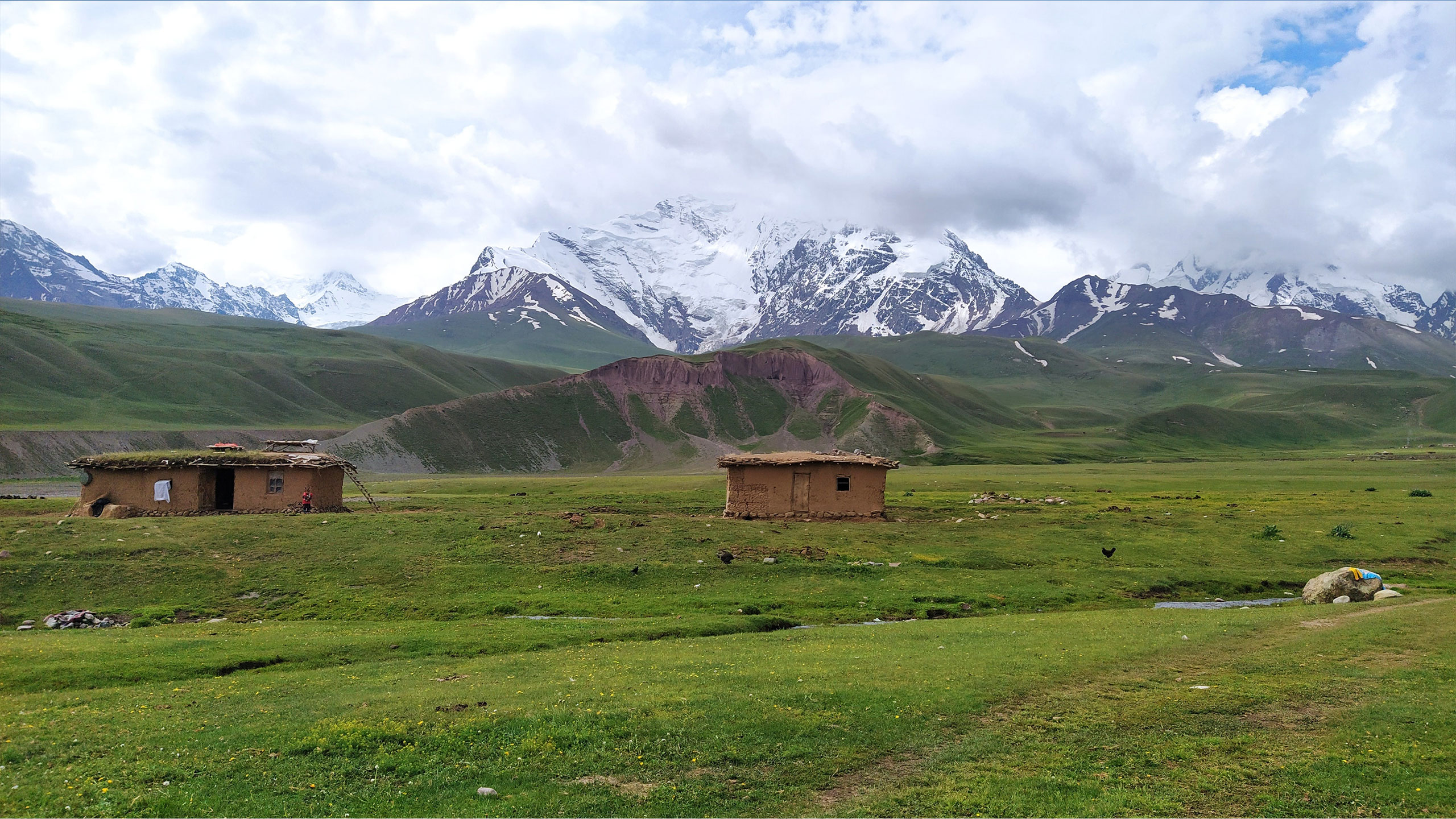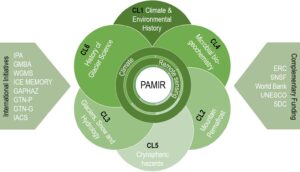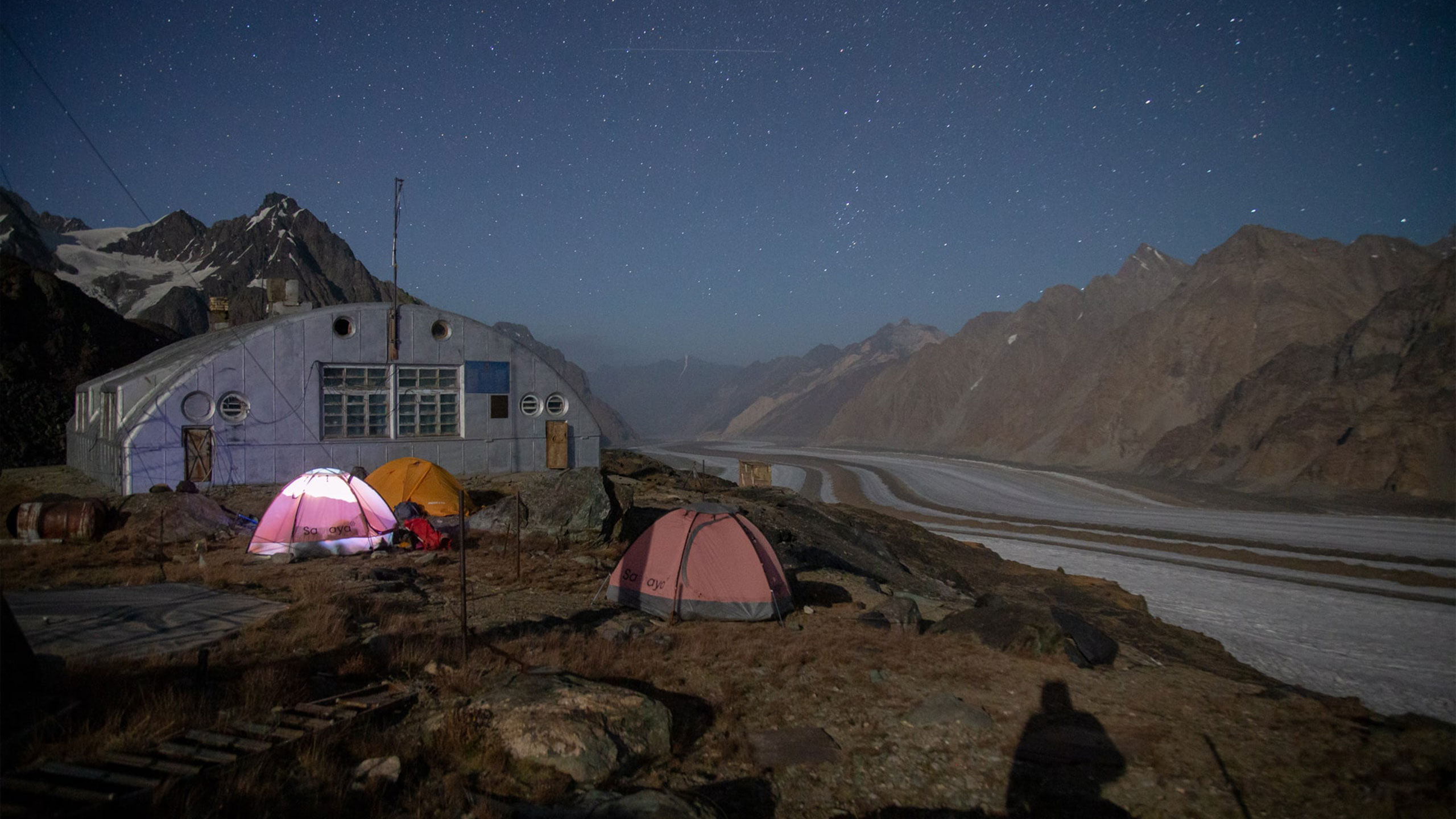
About PAMIR
Climate-induced environmental change is ubiquitous in mountain regions worldwide, but its impacts are less understood in the ‘Third Pole’ (the high-mountain regions of Asia) than in the Antarctic and Arctic.
This is surprising given the role the Third Pole cryosphere has for the economy and livelihood of millions of lowland people. Among the most iconic mountain ranges of the Third Pole are the Pamir Mountains, a keystone connecting the Central Asian (e.g. Tien Shan) and Himalayan mountain chains (e.g. Karakoram, Kunlun and Hindu Kush). The Pamir Mountains supply water to an arid region stretching to the Aral Sea, and buffer seasonal water shortage with snow, glacier and permafrost thaw. The Pamirs’ cryosphere is thus of key importance, particularly given the ongoing challenges with water management, agriculture and energy production. Still, the response of Pamir cryosphere and its ecosystems to climate change remains poorly understood, and the anomalous state of its glaciers exhibiting both health and decay, as well as the extent of thawing permafrost contributing additional water availability, remains an unsolved puzzle.
Competing ideas have been proposed to explain the unique state of the cryosphere in the region: increased precipitation at high elevations due to enhanced Westerlies, summertime cooling, or an increase in summertime precipitation due to irrigation in the agricultural regions adjacent to the Pamir. However, none of these ideas have been tested against direct measurements, and the region’s response to climate change and its consequences on hazards, downstream ecosystems and future water resources remain largely unknown. The severe lack of contemporary field measurements is a major challenge, but made worse by high uncertainty in regional glacier mass balance. The region remains thus a key knowledge gap. Understanding the current state of its cryosphere and its implications for hazards, water and ecosystems is important across the region due to the mountains’ climatic boundary position.
To address the key unknowns within this region, the PAMIR programme will leverage this unique ‘field laboratory’ of diverse cryospheric elements and trajectories. Our ambitious research revolves around the state, unexplained variability and trajectory of the Pamir cryosphere. It scrutinizes glaciers, snow and permafrost and links their changes to history, hazards, microbes and water resources. We will gather data ranging from ice to microbes to human memory, collecting new measurements to study climate change impacts on the cryosphere and the downstream implications, including hydrology, geohazards, microbial ecosystems, humans, and the history of cryospheric research and generate milestone knowledge for hazards, ecosystems and water resources management in the region.

Linking these disciplines and measurements, we will resolve the present state and trajectory of the Pamir cryosphere while also looking backwards in time to constrain climate dynamics and examine the invaluable heritage of Pamir cryospheric research. As the climate measurements captured in the physical archives of the Pamir glacier accumulation zones are at risk of disappearing, so is knowledge of past cryospheric study trapped in archives and human memory vulnerable to political changes. PAMIR will represent the foundation for ambitious new research and support the design of innovative research proposals that leverage the new data to test hypotheses, for modelling, and to deliver improved future runoff predictions and hazard assessments.
Crucially, this ambitious scientific undertaking is only possible as a joint collaboration with key local partners with an established presence in the Pamir region, and the programme will enable improved environmental monitoring at a network of mountain catchments spanning the Pamir mountains. Furthermore, it is essential to return knowledge to communities, and our programme endeavors to enable knowledge to return to communities in Switzerland and the Pamirs alike through a multi-pronged outreach campaign. Despite the geopolitical challenges and scientific risks, PAMIR is well situated to derive and deliver new scientific understanding of this incredible mountain region to stakeholders ranging from schoolchildren to planners and scientists.
The PAMIR research programme is led by principal investigators Prof Martin Hoelzle (martin.hoelzle@unifr.ch) and Prof Francesca Pellicciotti (francesca.pellicciotti@ist.ac.at), and the PAMIR programme manager Dr Evan Miles (evan.miles@geo.uzh.ch).

